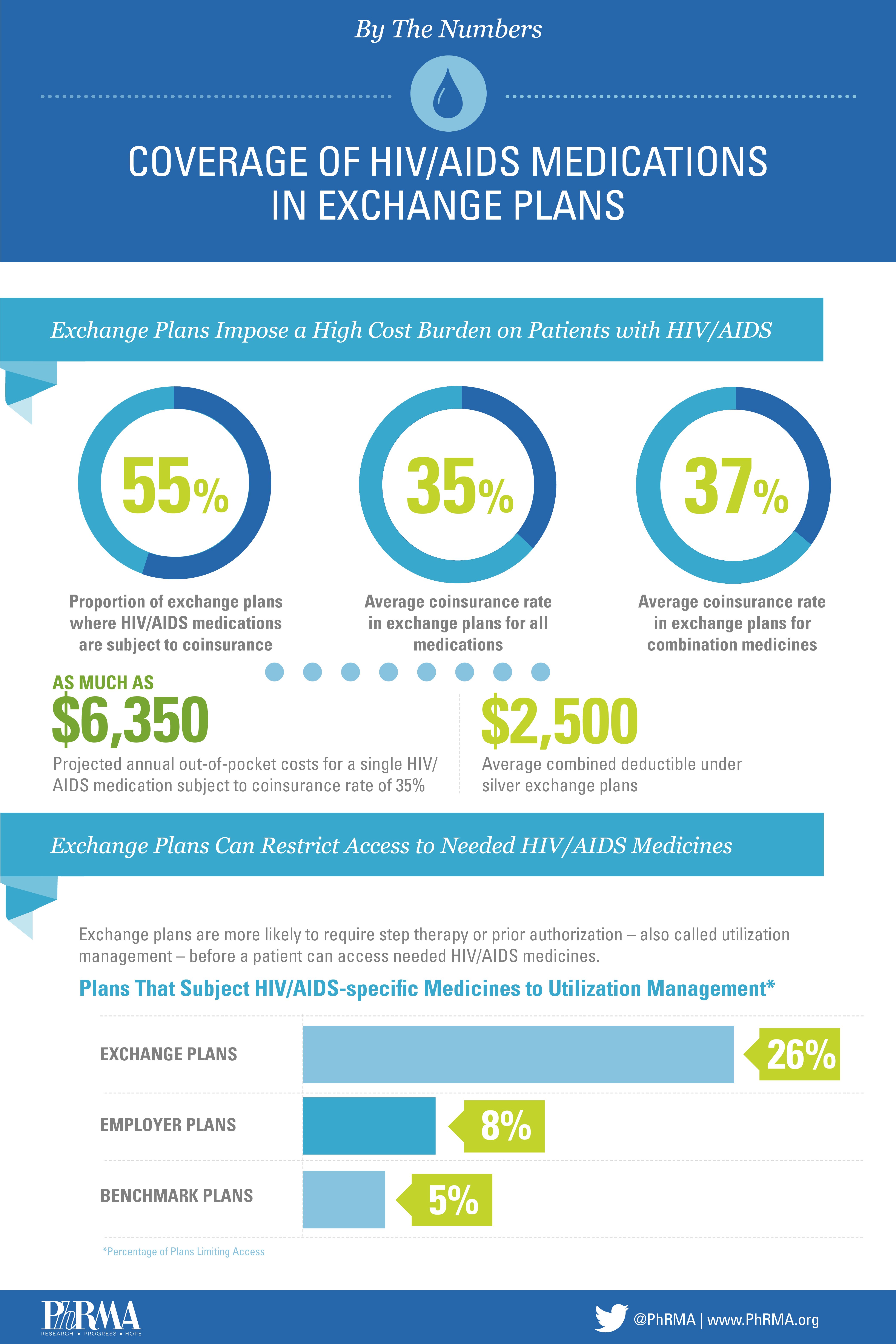Burden on Patients: Two Steps Forward and One Step Back for HIV/AIDS Patients
It was only a few decades ago that an HIV/AIDS diagnosis was a death sentence.

Burden on Patients: Two Steps Forward and One Step Back for HIV/AIDS Patients
It was only a few decades ago that an HIV/AIDS diagnosis was a death sentence.

Burden on Patients: Two Steps Forward and One Step Back for HIV/AIDS Patients
It was only a few decades ago that an HIV/AIDS diagnosis was a death sentence. Since the development of breakthrough treatments for patients living with HIV or AIDS, the death rate has decreased more than 80 percent and progression from HIV to AIDS has been stymied. Patients today experience fewer life-threatening infections, and as a result, hospital visits fell 23 percent between 2002 and 2007. While the future for HIV/AIDS treatments looks brighter, barriers to accessing innovative medicines threaten to thwart progress.
 Combination therapies are the standard for treating patients with HIV because they safely and reliably suppress HIV replication in the body below the limits of detection in most HIV-infected persons. But under the new health insurance exchange plans, they are only covered 67 percent of the time. Plans have less incentive to cover combination medicines because the essential health benefits (EHB) rules under the Affordable Care Act state that if the individual component medicines are already covered by the plan, combination medicines do not count towards EHB standards.
Combination therapies are the standard for treating patients with HIV because they safely and reliably suppress HIV replication in the body below the limits of detection in most HIV-infected persons. But under the new health insurance exchange plans, they are only covered 67 percent of the time. Plans have less incentive to cover combination medicines because the essential health benefits (EHB) rules under the Affordable Care Act state that if the individual component medicines are already covered by the plan, combination medicines do not count towards EHB standards.
Even when combination medicines are covered, patients face high out-of-pocket costs. On average covered combination medicines require 37 percent coinsurance, meaning patients may not be able to afford their treatments. High coinsurance doesn't just apply to combination therapies. On more than half of plans, all HIV/AIDS medicines require coinsurance payment averaging 35 percent. This can lead to non-adherence and skyrocketing health care costs. A single HIV/AIDS medication, for example, could cost an individual as much as $6,350 annually out-of-pocket, and most patients are paying these costs many times over because the combination therapies they need are not covered by their insurance.
“People are shocked when they go to the pharmacists. They can’t afford that,” said Carl Schmid, deputy executive director of The AIDS Institute. “People are not picking up their medications, and they’re going off their medications…it will lead to people being sick, people dying, people ending up in the hospitals, people building up drug resistance...It’s really a barrier for patients in accessing medications and staying healthy.”
It has been a long road to finding successful treatments for suppressing and managing HIV/AIDS. With breakthrough medicines that help patients to live longer, healthier lives, we must do everything we can to provide them with access to those treatments. Instead, coverage under the Affordable Care Act is like taking two steps forward and one step back. As Brian Hujdich, executive director of HealthHIV noted, “People living with HIV as a chronic condition are experiencing tremendous problems now as they’ve engaged in their new health plans, specifically when they look at their copays or their deductibles, and finding out their plans weren’t necessarily transparent in what the costs were. Frequently they can’t afford those costs.”
As more innovative treatments become available, it is imperative that the progress we’ve made is not diminished by lack of access. We’re continuing to explore what exchange coverage means for patients suffering from chronic conditions, so be sure to follow us on The Catalyst, Twitter and Facebook for more and check out our new fact sheets.